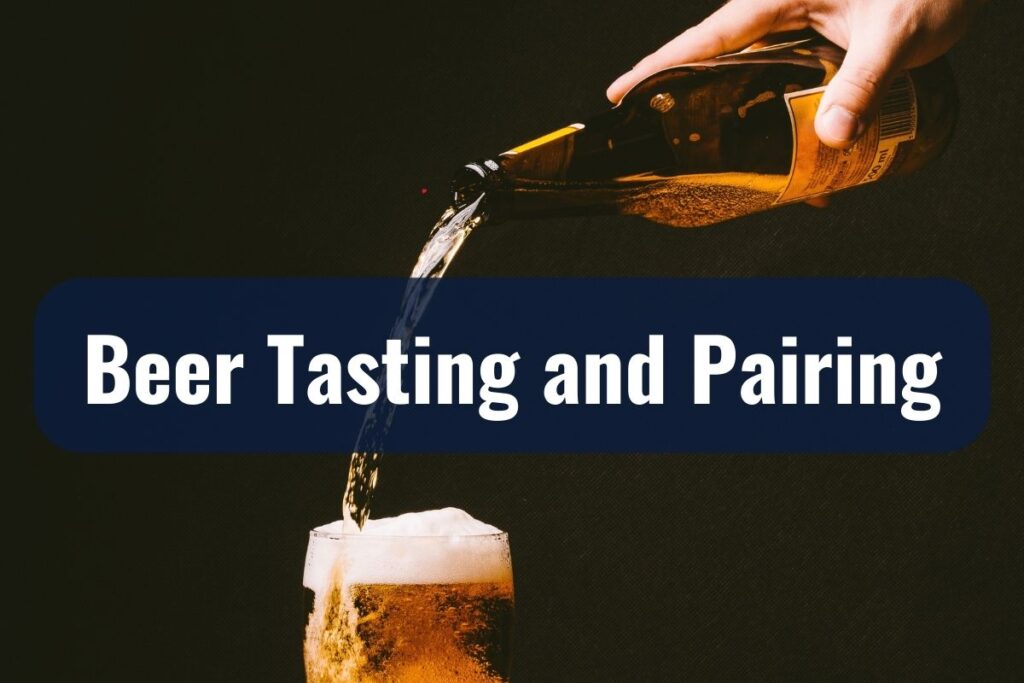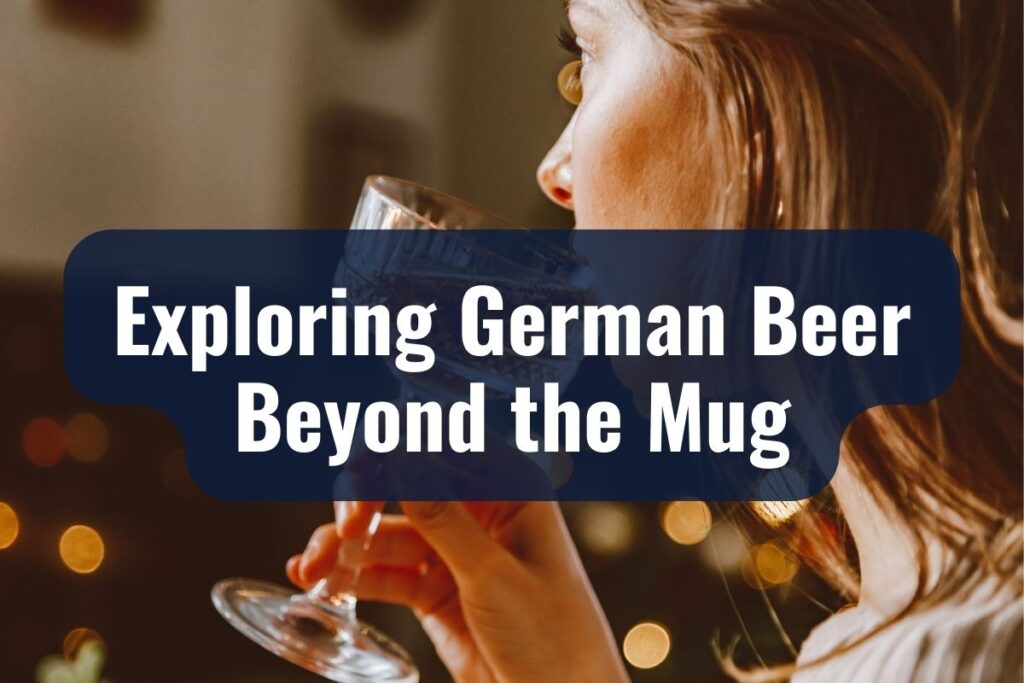Germany’s relationship with beer is as rich and deep as the flavors found in each pint. Tracing back to ancient times, beer has been an integral part of German culture, weaving itself into the social fabric and traditions of this storied land.
This journey through Germany’s beer landscape reveals not just a beverage but a celebrated art form, honed and perfected over centuries.
Key Takeaways
- German beer is deeply rooted in history and culture, symbolizing community and craftsmanship.
- The Reinheitsgebot law, emphasizing purity and quality, has shaped German beer’s unique characteristics.
- German beer styles range from crisp Pilsners and malty Dunkels to unique Weißbiers and smoky Rauchbiers.
- Regional traditions, like Bavaria’s Weissbier and Cologne’s Kölsch, highlight Germany’s diverse beer landscape.
- Beer tasting in Germany is an immersive sensory experience enhanced by appropriate food pairings.
- German beer culture extends beyond the drink, evident in social spaces like beer gardens and festivals.
Beer in the Heart of German Culture
Beyond being a mere drink, beer in Germany is a symbol of community, craftsmanship, and heritage. German towns and cities are dotted with beer gardens and halls, where people from all walks of life gather to share stories, laughter, and, of course, beer.
Each sip is a toast to a longstanding tradition that is both a part of daily life and festive celebrations. Whether it’s clinking mugs at Oktoberfest or enjoying a quiet evening at a local tavern, beer is the unifying element that brings people together.
Understanding the German Beer Purity Law (Reinheitsgebot)
The Reinheitsgebot: A Pillar of German Brewing
In the heart of Germany’s brewing philosophy lies the Reinheitsgebot, a historic beer purity law that has shaped the craft for centuries. Instituted in 1516, this decree, often hailed as the oldest food regulation in the world, initially mandated that beer should only be brewed from three ingredients: water, barley, and hops. The mystery ingredient, yeast, was unknown at the time and naturally found its way into the brew.
The Impact on German Beer Craftsmanship
The Reinheitsgebot is more than a law; it’s a testament to the German commitment to quality and purity in brewing. By restricting the ingredients, brewers were challenged to be innovative within boundaries, leading to a remarkable depth of flavors and styles, all derived from the same fundamental components. This law ensured consistency and purity in every barrel, making German beer renowned for its high quality and distinctive taste.
A Living Tradition
While modern regulations have adapted to include yeast and allow for a few more ingredients under specific circumstances, the spirit of the Reinheitsgebot lives on.
It continues to influence not only the way German beer is made but also how it is perceived globally. This reverence for tradition and quality is a hallmark of German brewing, setting a standard that is admired and respected in the beer world.
Exploring the Diversity of German Beer Styles

| Beer Style | Description | Region |
| Pilsner | Golden, crisp, slightly hoppy | Nationwide |
| Helles | Light, subtle maltiness, smooth | Bavaria |
| Dunkel | Dark, rich malt, caramel notes | Bavaria |
| Weißbier | Wheat beer, banana & clove flavors | Bavaria |
| Altbier | Copper-colored, balanced malt and hop | Düsseldorf |
| Bock | Strong lager, varieties include Maibock, Doppelbock | Nationwide |
| Märzen/Oktoberfest | Medium-bodied, rich malt, mild hop | Bavaria |
| Rauchbier | Smoky flavor from malted barley | Franconia |
| Kölsch | Crisp, light ale, unique to Cologne | Cologne |
Lager Beers: Crisp, Refreshing, and Diverse
Pilsner: The Golden Standard
The Pilsner is perhaps the most famous German lager, known for its golden hue and crisp, refreshing taste. Originating in the 19th century, this beer showcases a perfect balance of slight malt sweetness with a distinctive hop bitterness. Brands like Bitburger and Krombacher exemplify this style, offering a taste that’s both invigorating and soothing.
Helles: A Bavarian Favorite
Helles, meaning ‘light’ in German, is a staple in Bavarian beer culture. It’s less hoppy compared to Pilsners, with a subtle maltiness and a clean, smooth finish. Its approachable character makes it a popular choice in beer halls and gardens across Munich and beyond.
Dunkel: Rich and Malty
Dunkel, the darker counterpart to Helles, offers a rich and malty experience. With its roots in Bavaria, this lager presents a harmonious blend of caramel and chocolate notes, creating a smooth and satisfying sip. Dunkel is a testament to the depth that can be achieved with the limited ingredients dictated by the Reinheitsgebot.
Ale Beers: The Other Side of German Brewing
Weißbier/Weizenbier: Wheat Beer Wonder
Weißbier, also known as Weizenbier, is a beloved wheat beer that is a staple in Bavarian beer culture. Characterized by its cloudy appearance and flavors of banana and clove, this beer is both refreshing and complex. Varieties like Hefeweizen (unfiltered) and Kristallweizen (filtered) offer different takes on this traditional style.
Altbier: A Taste of Tradition
Altbier, meaning ‘old beer’, hails from Düsseldorf and is a nod to the pre-lager brewing traditions of Germany. This top-fermented beer is known for its copper color and a balanced profile of bitterness and maltiness. It’s a beer that encapsulates history with each sip.
Specialty and Seasonal Beers: Celebrating Variety
Bock: Strong and Bold
Bock beers are strong lagers, with sub-varieties like Maibock (lighter and hoppier) and Doppelbock (stronger and maltier). Originating as a symbol of special occasions, these beers are a testament to the celebratory nature of German beer culture.
Märzen/Oktoberfest: Festive Flavors
Märzen, the traditional Oktoberfest beer, is a medium-bodied lager that is rich in malt with a mild hop flavor. Brewed in March (hence the name) and aged through the summer, it’s the star of the world-renowned Oktoberfest in Munich.
Rauchbier: Smoky Uniqueness
Rauchbier, or ‘smoke beer’, from Bamberg, stands out with its distinctive smoky flavor, derived from malted barley dried over an open flame. This beer is a journey into the more adventurous side of German brewing, offering a taste that’s as memorable as it is unique.
Regional Beer Traditions in Germany

Bavaria: The Heartland of German Beer
Embracing Weissbier and Oktoberfest
In Bavaria, beer is more than a beverage; it’s a way of life. This region is renowned for its Weissbier, a wheat beer that has become synonymous with Bavarian brewing.
The region’s global fame peaks each year with Oktoberfest, the world’s largest beer festival, where Märzen/Oktoberfest beers flow in abundance. Here, beer is celebrated with a fervor that encapsulates the joy and communal spirit of Bavarian culture.
Cologne (Köln): The Birthplace of Kölsch
Kölsch: A Unique Brew in a Historic City
Cologne takes pride in Kölsch, a beer so special that it’s geographically protected. This crisp, light ale is served in unique, slender glasses called “Stangen,” symbolizing the city’s distinctive approach to beer.
Cologne’s beer culture is one of precision and pride, offering a brewing tradition steeped in history yet vibrant and alive in modern-day beer halls and breweries.
Düsseldorf: Altbier and Brewing Heritage
Altbier: A Link to Brewing’s Past
Düsseldorf’s Altbier is a testament to the enduring legacy of German ale brewing traditions. This copper-colored, top-fermented beer offers a harmonious balance of hoppy bitterness and malty sweetness, embodying the city’s dedication to maintaining its rich brewing history while keeping the flavors fresh and contemporary.
Franconia: A Brewery Haven
The World’s Highest Brewery Density
Franconia, particularly the area around Bamberg, is a hidden gem for beer enthusiasts. Boasting the world’s highest density of breweries, this region offers an unparalleled variety of beer styles.
From the smoky Rauchbier to a myriad of local specialties, Franconia is a treasure trove for those seeking to explore the full spectrum of traditional German brewing.
Beer Tasting and Pairing

Mastering the Art of German Beer Tasting
Savoring Each Sip
Embarking on a journey of German beer tasting is an adventure for the senses. To truly appreciate the depth and variety, it’s essential to understand the nuances of each style.
From observing the beer’s color and aroma to savoring the initial taste and the finish, beer tasting in Germany is an experience that goes beyond mere drinking. It’s about understanding the story and craftsmanship behind each brew.
Pairing German Beer with Food
A Culinary Symphony
Pairing German beer with the right food can elevate the tasting experience to new heights. The crispness of a Pilsner, for instance, can beautifully cut through the richness of traditional German sausages, while the subtle spices of a Weißbier complement the flavors of a classic Bavarian pretzel. For heartier dishes like pork knuckle (Schweinshaxe), a robust Doppelbock can be the perfect match, harmonizing with the meal’s savory depth.
Tips for an Authentic Tasting Experience
Creating the Perfect Setting
To replicate an authentic German beer-tasting experience, consider the setting. A comfortable, convivial atmosphere, perhaps reminiscent of a cozy Bavarian beer garden or a traditional Kölsch brewery in Cologne, can enhance the enjoyment.
Pay attention to the glassware too; using the right type of glass for each beer style not only adds to the aesthetic but can also affect the beer’s head formation and aroma release.
Exploring German Beer Beyond the Mug

The Social Fabric of German Beer: Beer Gardens and Beer Halls
More Than Just Drinking Spots
In Germany, beer gardens and beer halls are institutions that transcend the act of drinking beer. These communal spaces are where people come together to celebrate life, share stories, and enjoy the camaraderie that comes with a shared love for beer.
From the iconic beer gardens of Munich, shaded by chestnut trees, to the lively beer halls of Berlin, each venue offers a unique window into the heart of German social life.
Festivals and Events: Celebrating Beer in Grandeur
Oktoberfest and Beyond
Oktoberfest in Munich is the epitome of German beer celebrations, drawing visitors from around the globe. However, Germany’s beer festival calendar is dotted with numerous other events like the Starkbierfest (Strong Beer Festival) and smaller local festivals, each showcasing the diversity and festive spirit of German beer culture.
Brewery Tours: A Peek into the Brewing Process
Experiencing Brewing Artistry Firsthand
For those keen on understanding the intricacies of beer-making, Germany offers countless brewery tours. These tours provide a behind-the-scenes look at the brewing process, from mashing to fermentation. Visitors can witness the dedication and skill that goes into crafting each beer, gaining a deeper appreciation for the beverage in their mug.


